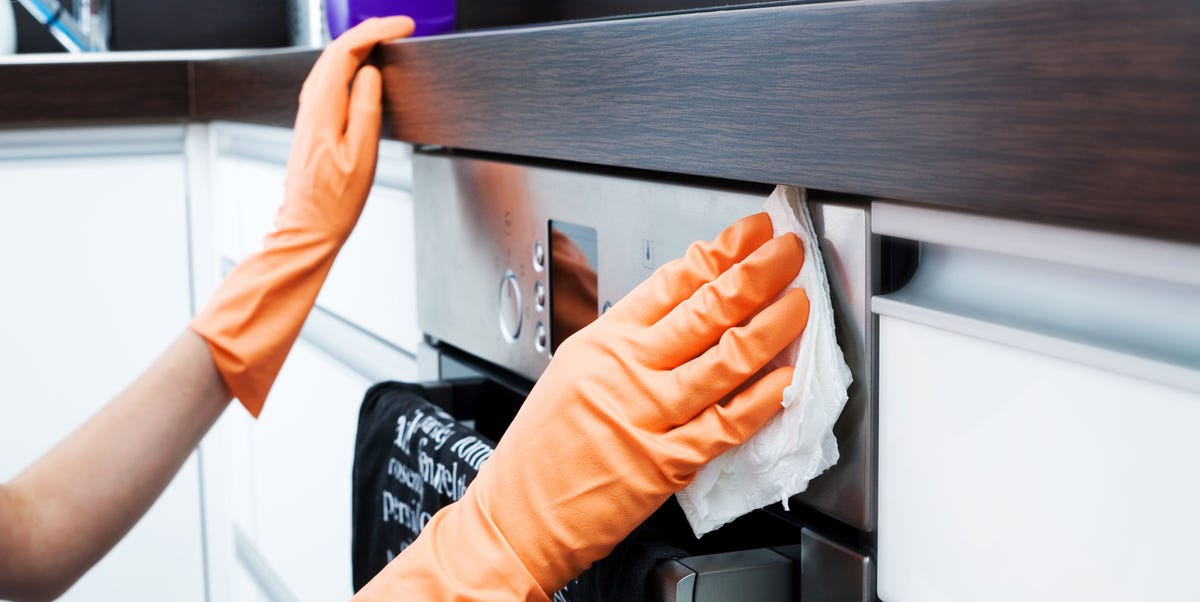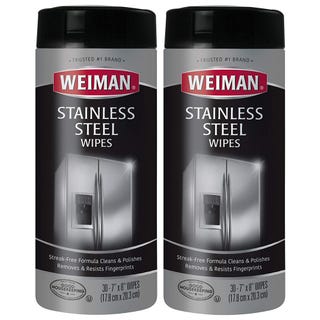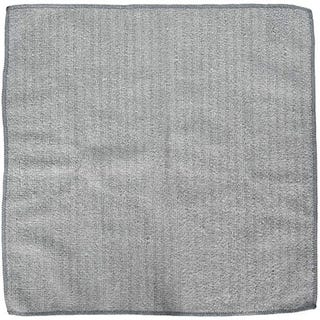
[ad_1]
When your brand-new stainless steel fridge, dishwasher, oven or other appliance first arrives, it has a pristine gleam that instantly brightens up your kitchen. By day two, however, it’s often already lost its luster thanks to little fingers, water drips and messy accidents. Luckily, there are easy ways to make your stainless steel surfaces look like new, no matter how old or well-loved they may be.
While using a targeted cleaner specifically for stainless steel appliances, like (Good Housekeeping Seal holder Weiman Stainless Steel Cleaning Wipes)is a simple fix, it is possible to make your appliances and sinks sparkle again with products you already have on hand, and by following these tried-and-tested tips from Carolyn Forte, Executive Director of the Good Housekeeping Institute Cleaning Lab. Take a look at this guide on how to clean stainless steel, including how to best remove streaks and add shine.
Note: For any new stainless steel appliance, always consult the manufacturer’s cleaning recommendations. Not all finishes are the same. Some have special protective coatings that may need special treatment, so it’s always best before trying any cleaning product to confirm it’s what the manufacturer recommends, especially when your appliance is still under warranty.
How to Clean Stainless Steel
Unlike other surfaces, stainless steel is surprisingly easy to clean: just wipe away any streaks or smudges with a specialty cleaner made for appliances. Use a little elbow grease to get rid of any oily residue or stubborn fingerprints. If you don’t have any stainless steel appliance cleaners on hand, you can use other at-home cleaners for a quick spiff up. Never use cleaners or scrubbers designed just for stainless steel sinks or cookware on appliances. They can be too abrasive and scratch the finish.
Stainless Steel Cleaning Don’ts:
- Avoid using scouring powders, steel wool, bleach and ammonia to prevent damage to the appliance’s finish.
- Avoid wiping your stainless steel appliances against the metal’s grain to minimize streaks. It’s perfectly okay to scrub stainless steel sinks and pots in a circular motion. In fact, it helps hide scratches and gives them a patina.
- Avoid allowing your stainless steel appliances to air dry. Buffing them with a clean, microfiber cloth after cleaning will prevent stains and minimize streaks.
Our Favorite At-Home Stainless Steel Spot Cleaners:
- Dish Soap: Mix 1 teaspoon of dish detergent and 1 quart hot tap water. Dip a microfiber cloth into the solution and rub the marks in small sections, going with the metal’s grain. Rinse with clean hot water only, and dry immediately with a clean cloth.
- Mineral Oil: To help erase and prevent fingerprints, apply a very light coating and buff well to avoid any tacky buildup. Whatever you do, stay away from food-based oils, including vegetable and olive oil, because they can turn rancid.
- Windex: Spray a dry cloth with an ammonia and vinegar-free window cleaner, and then wipe the surface clean. Buff with a clean dry cloth.
How to Get Streaks off Stainless Steel Appliances
Regardless of what kind of stainless steel cleaner you’re using, make sure to wipe the cleaner in the direction of the metal’s grain. (FYI, streaks are the result of wiping against the grain or in a circular motion, not using enough cleaner or not buffing thoroughly enough after cleaning.) For extra shine, use enough cleaner to dissolve grease and buff with a clean microfiber cloth afterward.
How to Get Stainless Steel to Shine Again
While you can use dish soap or mineral oil to remove pesky marks and smudges, the only way to bring back your appliance’s natural shine is by using cleaners formulated specifically for stainless steel. On top of that, look for a cleaner with a protectant to help repel soil and fingerprints. That way you won’t have to clean your appliances as frequently.
Does Vinegar Damage Stainless Steel?
Using vinegar to clean your stainless steel sinks is okay, but we don’t recommend cleaning your stainless steel appliances with it. Stainless steel sinks and cookware can withstand a bit more muscle from the mildly abrasive or acidic cleansers they need to scour away food particles and buff out scratches. Stainless steel appliances have different and more delicate finishes that can be damaged by acids (like vinegar). When in doubt, checking your appliance makers’ website for cleaning instructions and spot testing your chosen cleaning method on a small, hidden corner of your appliance is always a good idea.
This content is created and maintained by a third party, and imported onto this page to help users provide their email addresses. You may be able to find more information about this and similar content at piano.io
[ad_2]
Source link



